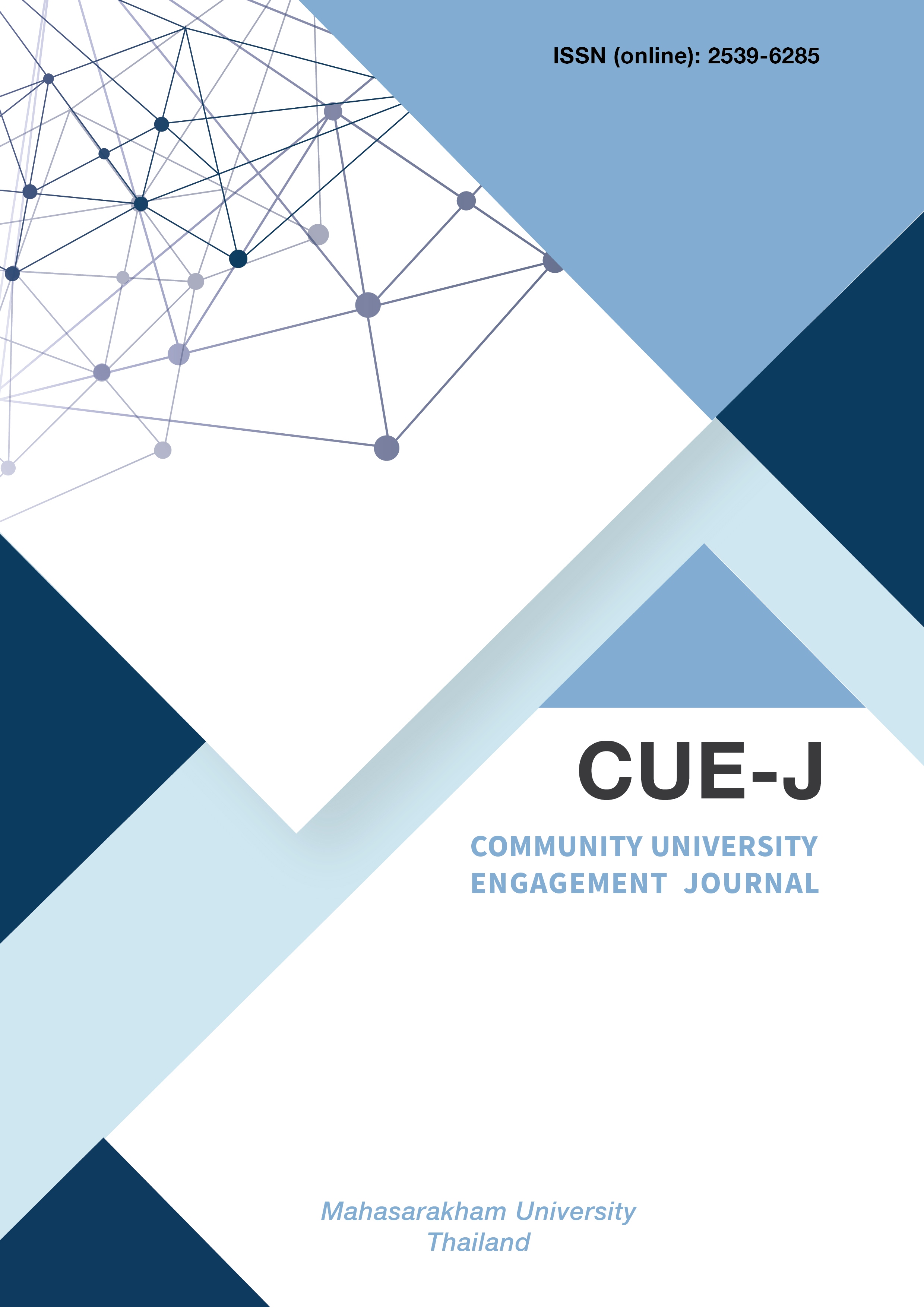Development of rice products as healthy food from local rice in Maha Sarakham Province
Main Article Content
Abstract
The development of value-added health food products from indigenous rice in Maha Sarakham province focuses on analyzing the nutritional value of indigenous rice products. It also aims to develop rice products that cater to the preferences of the target consumers and create market channels for community products. The primary goal is to address and elevate the organic rice products of the Plabu Community Enterprise in Nong Saeng sub-district, Wapi Pathum district, Maha Sarakham province. This community enterprise comprises over 50 members who collectively cultivate 1,200 acres of land, producing an average of 100 kilograms of organic rice per month, with a 100% organic farming approach. Therefore, the rice produced by this community enterprise is nutritionally both valuable and safe. This research project employs a participatory and mixed-method approach. After delivering nutritional information about eight local rice varieties to the community enterprise, it resulted in the community understanding the factors and reasons behind all the changes that occurred. This led to the exploration of solutions that address various issues, including: Learning and Knowledge Management: This involves acquiring research skills and knowledge management resulting from the study of the community’s dynamics and changes (Time Line Analysis). This understanding helps identify factors and causes of all changes and leads to the exploration of solutions aligned with various problems. Livelihood Generation: This includes skill development on a community basis, expanding career opportunities, and entrepreneurship. The research links and engages target groups in activities aimed at building vocational skills, such as enabling community enterprises and community members to sell their products online using modern media and packaging. This can create income and economic opportunities. Income Generation: Traditional rice markets involve middlemen and rice mills, which often result in low rice prices. This research analyzes the potential for creating an identity for the product, such as modern packaging that refl ects the community’s identity. This can improve the value of the rice and generate income for the community. Quality of Life Improvement: Increasing the income of the community enterprise aims to enhance the quality of life in terms of improving the economic aspect (Economic Development) and using science and technology for analyzing nutritional values and designing packaging. Networking and Community Building: Establishing networks and connections with private individuals, community enterprises, and universities plays a crucial role in expanding the market for community enterprises. This is a signifi cant strategy for creating a “New Economy” that generates new value chains for community enterprises. The research involves agricultural practices that focus on area analysis, effi ciency improvement, and productivity enhancement, incorporating science, technology, and innovation to help achieve these goals.
Article Details

This work is licensed under a Creative Commons Attribution-NonCommercial-NoDerivatives 4.0 International License.
All authors need to complete copyright transfer to Community University Engagement Journal prior to publication. For more details click this link: copyright & license
References
Namhai. T. (2010). Sustainable integrated agriculture-based food production model in Pla Bu Village, Nong Saeng Sub-district, Waipatum District, Maha Sarakham Province. Offi ce of the National Research Council of Thailand (NRCT).
Pongpisit, S. (2009). Community enterprise handbook. Charoenvit Publishing.
Songprasert, J. (2008). Methods for promoting organic rice farming for self-reliant economy of farmers in Hanghin Sub-district, Chuan District, Phayao Province. Maejo University.
Yantawiriyasuk. (1988). Physical quality and rice standards. In the document accompanying the lecture on improving rice quality for mill operators. Ministry of Agriculture and Cooperatives. Bangkok.

